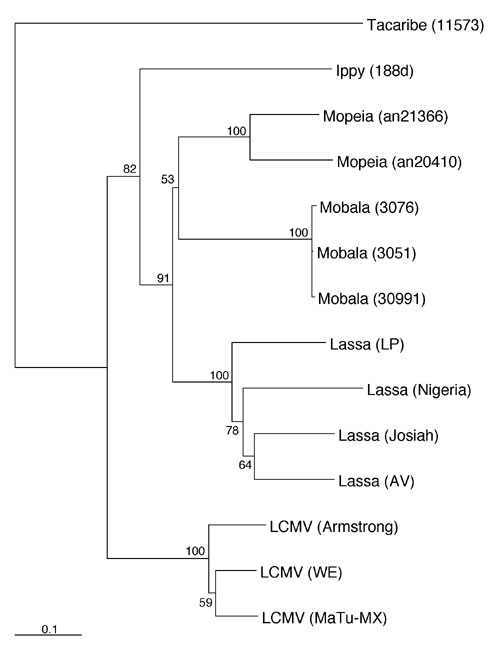Volume 6, Number 5—October 2000
Research
Imported Lassa Fever in Germany: Molecular Characterization of a New Lassa Virus Strain
Figure 6

Figure 6. Phylogenetic analysis of Old World arenaviruses, including Lassa AV. The tree was computed for an NP gene fragment by using the neighbor-joining method. Bootstrap support (in %) is indicated at the respective branch. The same topology and similar bootstrap values, except for the terminal lymphocytic choriomeningitis virus branches, were obtained by using the maximum likelihood method. Tacaribe virus belonging to the New World arenaviruses was used as outgroup to root the tree.
Page created: December 17, 2010
Page updated: December 17, 2010
Page reviewed: December 17, 2010
The conclusions, findings, and opinions expressed by authors contributing to this journal do not necessarily reflect the official position of the U.S. Department of Health and Human Services, the Public Health Service, the Centers for Disease Control and Prevention, or the authors' affiliated institutions. Use of trade names is for identification only and does not imply endorsement by any of the groups named above.